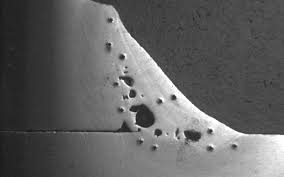What is Porosity in Welding: Comprehending Its Reasons and Enhancing Your Abilities
What is Porosity in Welding: Comprehending Its Reasons and Enhancing Your Abilities
Blog Article
Porosity in Welding: Identifying Common Issues and Implementing Ideal Practices for Prevention
Porosity in welding is a pervasive concern that usually goes undetected up until it causes significant troubles with the stability of welds. This common defect can compromise the stamina and longevity of welded structures, presenting security threats and leading to pricey rework. By recognizing the origin creates of porosity and executing reliable avoidance strategies, welders can dramatically improve the top quality and dependability of their welds. In this conversation, we will certainly discover the crucial elements adding to porosity formation, examine its damaging results on weld performance, and talk about the ideal techniques that can be embraced to lessen porosity occurrence in welding processes.
Common Sources Of Porosity

An additional constant wrongdoer behind porosity is the visibility of impurities on the surface of the base steel, such as oil, grease, or rust. When these impurities are not effectively eliminated prior to welding, they can vaporize and end up being caught in the weld, creating issues. Utilizing filthy or damp filler materials can present contaminations into the weld, contributing to porosity issues. To mitigate these usual reasons of porosity, thorough cleansing of base steels, proper protecting gas choice, and adherence to optimum welding specifications are crucial practices in accomplishing high-quality, porosity-free welds.
Effect of Porosity on Weld Top Quality

The visibility of porosity in welding can substantially compromise the architectural integrity and mechanical buildings of welded joints. Porosity creates spaces within the weld metal, compromising its general stamina and load-bearing capability.
Among the key effects of porosity is a reduction in the weld's ductility and toughness. Welds with high porosity levels often tend to display reduced influence toughness and lowered capacity to deform plastically before fracturing. This can be especially worrying in applications where the welded elements are subjected to dynamic or cyclic loading conditions. Porosity can impede the weld's capacity to effectively send pressures, leading to premature weld failure and prospective safety and security hazards in crucial frameworks. What is Porosity.
Ideal Practices for Porosity Avoidance
To enhance the structural honesty and quality of welded joints, what specific measures can be executed to lessen the incident of porosity during the welding process? Porosity avoidance in welding is crucial to guarantee the stability and strength of the final weld. One efficient technique appertains cleansing of the base steel, eliminating any contaminants such as corrosion, oil, paint, or wetness that could cause gas entrapment. Making why not look here sure that the welding devices remains in good problem, with tidy consumables and ideal gas flow rates, can additionally significantly lower porosity. In addition, preserving a stable arc and managing the welding criteria, such as voltage, current, and take a trip speed, assists create a constant weld swimming pool that reduces the danger of gas entrapment. Making use of the proper welding check these guys out technique for the details material being welded, such as changing the welding angle and gun placement, can further stop porosity. Routine assessment of welds and immediate remediation of any concerns identified during the welding process are necessary techniques to stop porosity and create top notch welds.
Significance of Appropriate Welding Strategies
Carrying out appropriate welding techniques is critical in making sure the structural honesty and high quality of welded joints, developing upon the structure of effective porosity avoidance procedures. Extreme heat can lead to increased porosity due to the entrapment of gases in the weld swimming pool. In addition, using the proper welding criteria, such as voltage, current, and travel rate, is vital for attaining audio welds with very little porosity.
Moreover, the choice of welding process, whether it be MIG, TIG, or stick welding, should straighten with the certain needs of the job to ensure optimal results. Proper cleaning and preparation of the base metal, in addition to picking the ideal filler material, are additionally essential elements of efficient welding strategies. By adhering to these finest methods, welders can decrease the danger of porosity development and generate premium, structurally audio welds.

Evaluating and Top Quality Control Procedures
Quality assurance measures play an essential role in validating the stability and dependability of bonded joints. Examining treatments are vital to spot and prevent porosity in welding, making certain the toughness and resilience of the final item. Non-destructive screening approaches such as ultrasonic screening, radiographic testing, and aesthetic inspection are typically utilized to determine possible problems like porosity. These strategies enable the analysis of weld quality without compromising the integrity of the joint. What is Porosity.
Post-weld examinations, on the various go to this web-site other hand, assess the last weld for any kind of flaws, consisting of porosity, and validate that it fulfills defined requirements. Carrying out a detailed quality control strategy that consists of detailed screening treatments and examinations is paramount to decreasing porosity issues and guaranteeing the overall quality of bonded joints.
Conclusion
Finally, porosity in welding can be an usual concern that affects the high quality of welds. By determining the typical sources of porosity and applying best techniques for avoidance, such as correct welding techniques and screening steps, welders can guarantee premium quality and reputable welds. It is necessary to prioritize avoidance methods to decrease the event of porosity and keep the honesty of welded structures.
Report this page